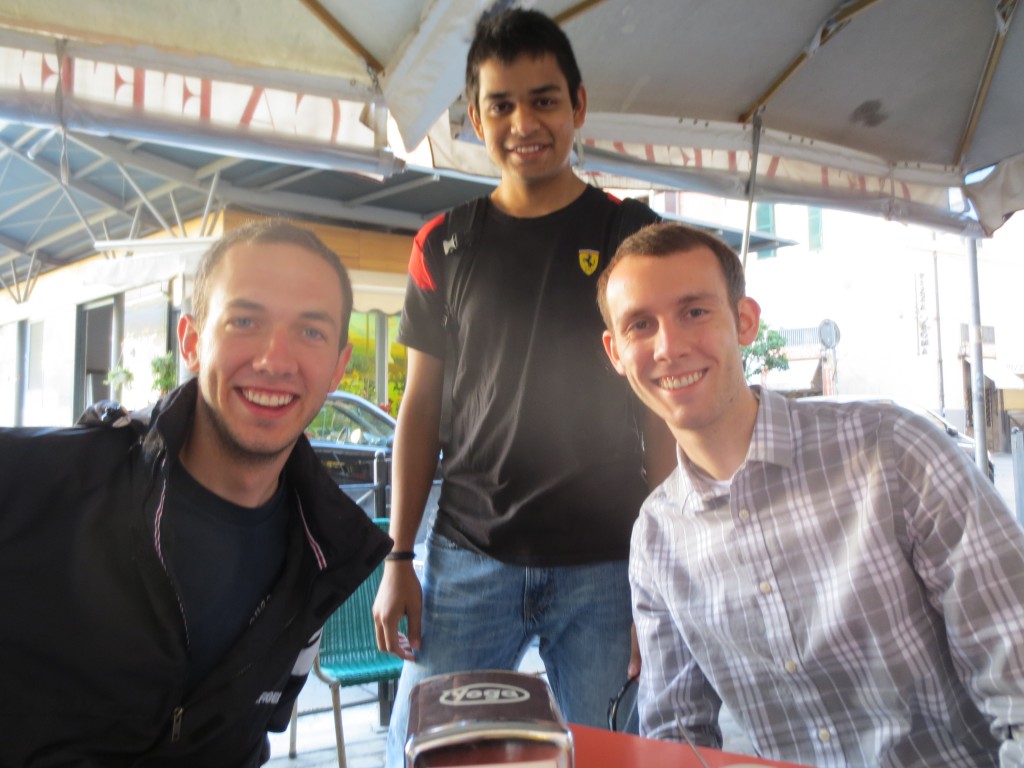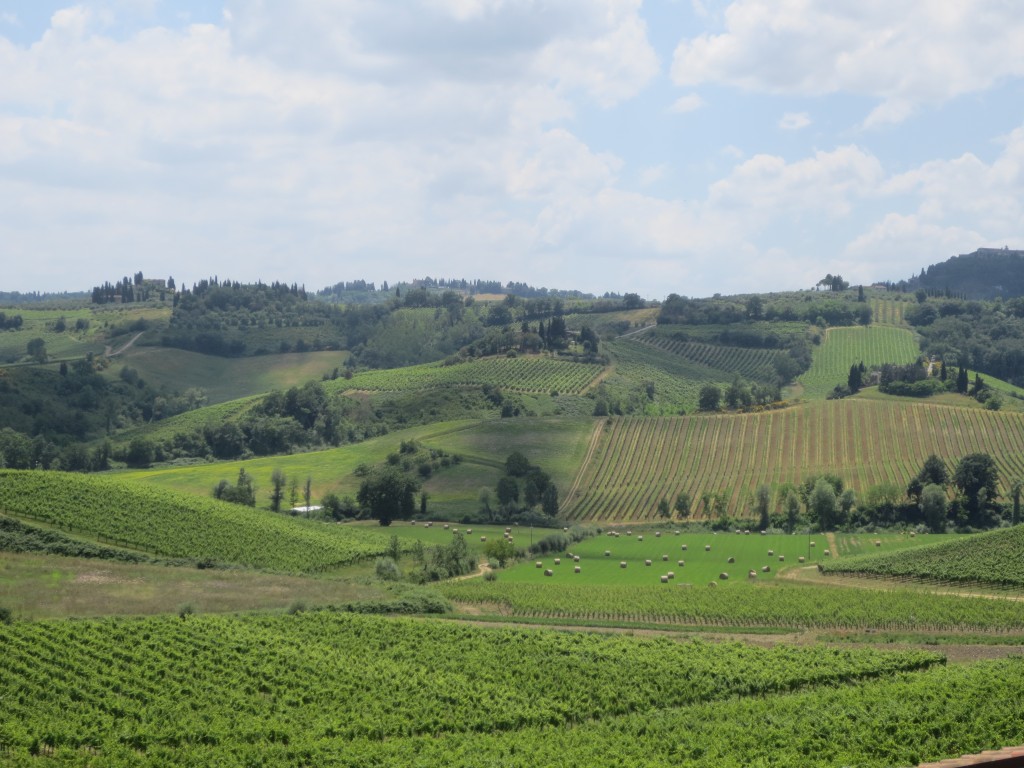
The statue Il Porcellino found in Florence. The University of Arkansas has a replica outside University House on Maple.
Honors chemical engineering student Nick Kordsmeier spent his summer studying the masterpieces of Michelangelo and Caravaggio, learning Italian from native Romans, hiking the still-active Mt. Vesuvius, and eating some of the world’s best gelato. Here is an excerpt from his post to the Honors College blog:
This summer I spent five weeks in the heart of Italy studying abroad in Rome, one of the most exciting and beautiful places I’ve ever been. I took part in the newly designed U of A Summer Campus in Rome program, taking art lecture and beginning Italian. And I can’t imagine a better place to study either of those subjects.
Studying art history in Rome was one of the most rewarding academic experiences I’ve ever had. In Rome, art surrounds you at all times—everywhere you walk (and you do walk a lot), you see breathtaking fountains and buildings, unbelievable church ceilings, and infinitely picturesque alleys. We would spend half of our class time learning how to appreciate art and the other half on site visits actually appreciating it up close and personal. And because much of Rome seems aesthetically untouched by modern times, it was easy to imagine walking in the same footsteps as artists like Michelangelo and Caravaggio, making their masterpieces easier to appreciate on a more human level.
As part of our curriculum, my entire study abroad group traveled to Florence where I was lucky enough to get to see Michelangelo’s David. In the museum, rounding the corner and seeing this perfect, massive sculpture at the end of a hallway of statues brought me to a complete halt. Needless to say, David was one of my favorite pieces from the trip.
The other course, beginning Italian, was taught by a native Roman. For the entire month I memorized lists of nouns and verbs and conjugations and amazingly came away with a decent (beginning) understanding of Italian. And since our professor was an actual Italian, each and every class was a lesson in culture as well. We watched historically significant Italian films, learned about social customs, and most importantly discussed food.
In Fayetteville, I spend most of my semesters studying math and science, so getting to take a month to explore the humanities was refreshing – to get to do it in Rome just made things a lot sweeter. While in Rome, I felt that we had the opportunity to truly live as Romans do. The program provided nice apartments for us to live in, right in the center of Trastevere, the neighborhood of Rome that has most retained its Old World character. Here we had access to street markets, some delicious gelato from our friend Giuseppe, and tons of amazing restaurants. We even used our kitchens to cook several “authentic” Italian meals as a big group. The culture in Rome is alternately very relaxed and very hectic. Each day Romans close shop and take a short riposo similar to a Spanish siesta, and I’ve never seen people take a meal at a slower pace than the Italians. On the other hand, the “no rules” traffic made for some interesting bus rides.

Me and the roommates (Davis Ward and Akash Patel) on an early morning coffee run near the Piazza San Cosimato in Trastevere.

Standing on top of Mt. Vesuvius, the infamous still-active volcano that wiped out Pompeii in 79 A.D.
Despite the surprising amount of work I had to put into both of my classes, I still had plenty of time to explore Italy. After many nights of planning, nine of our group boarded a train for Sorrento. On our way, we stopped off to hike up Mt. Vesuvius, the still-active volcano responsible for famously destroying Pompeii. I’ll never forget the mildly terrifying cab ride we took up the mountain, where our driver would honk as he was going around blind curves to hopefully alert oncoming traffic that we were coming. A few short hikes and one more short train ride later, we stepped off at the ruins of Pompeii itself for a hot and dry tour. The highlight of our weekend trip though was our day trip to the island of Capri. I’ve never seen a more beautiful piece of land in my life. Capri is basically a mountain island in the Mediterranean Sea covered with deserted, tiny streets, a bustling city center covered with tourists, and lots of boat rentals. Five of us rented one of these boats and spent the afternoon boating and swimming around the island. I can now say that I’ve swum in the “wine dark Mediterranean,” as my high school history teacher used to call it.

The vineyards of Tuscany were ridiculously picturesque. You could see views like this in every direction.
On another weekend four of us took a bus tour through the Tuscan wine country where we saw the world’s oldest operating bank, ate some of the world’s best gelato (literally a World Gelato competition winner), and saw some excessively beautiful farmland. Not to mention that we also were able to capture our obligatory Leaning Tower of Pisa photos.

You can even see the gelato being made in some shops, like the Gelateria del Teatro down the street from our classrooms.
Deciding to study abroad in Italy was one of the best decisions I’ve ever made. Seeing another part of the world and learning about its culture has opened me up to trying new things and meeting new people. I got to study art firsthand and practice Italian on real Italians. I also expect that my time abroad will stand out to employers during my job search this year since a lot of engineering companies have an international presence. I would definitely recommend studying abroad, and if you want to see Italy, the U of A Summer Campus in Rome is a great program.
Ciao!

